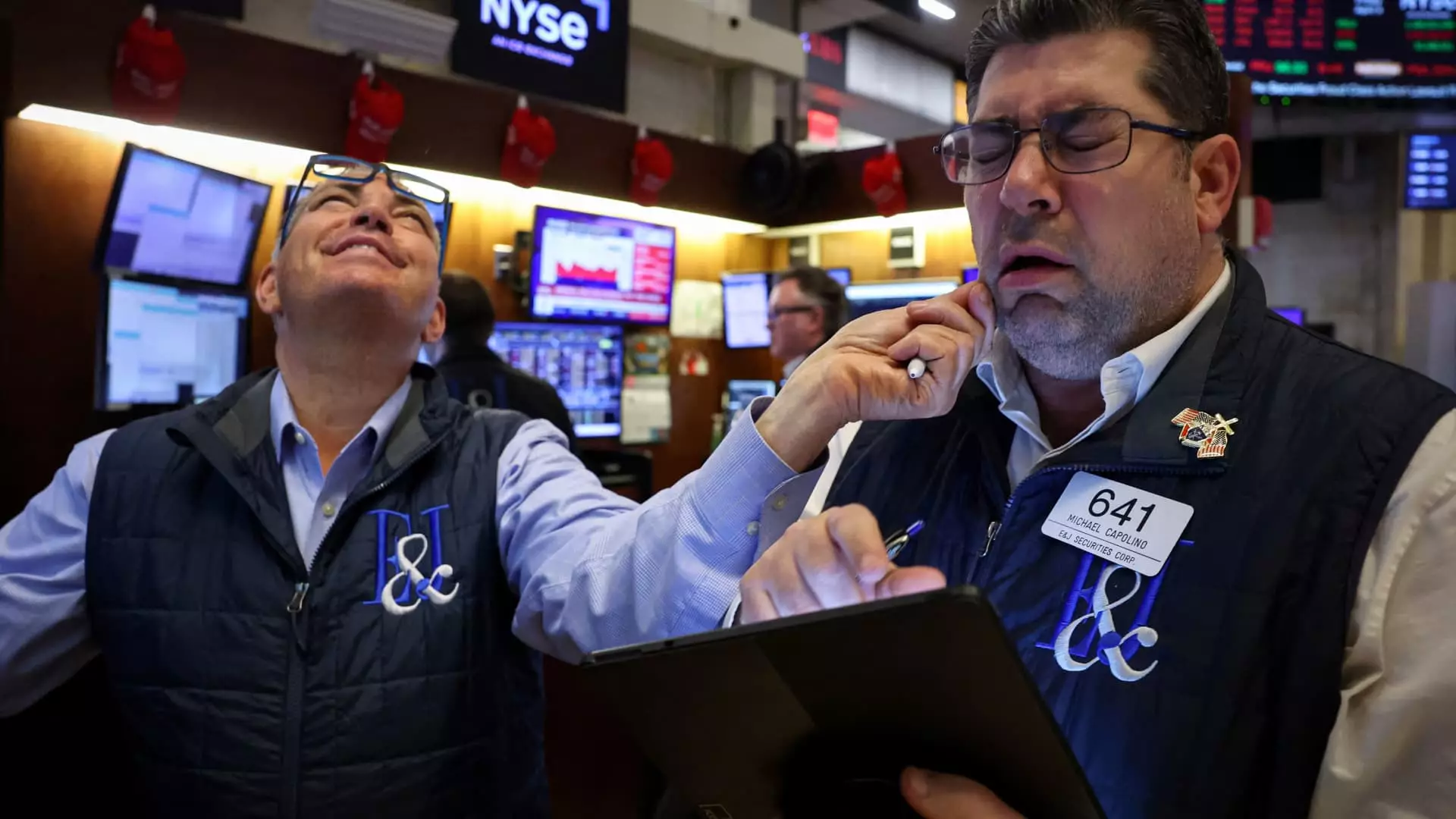The political landscape has been shaken dramatically by President Donald Trump’s recent announcement regarding trade tariffs, clouding the economic horizon with uncertainty and chaos. Just when investors believed that the tariff situation could be handled, the reality proved to be far worse than any preliminary assessments. Instead of a minor detour in trade negotiations, the market encountered a cataclysmic upheaval that sent stocks on a downward spiral, highlighting that Trump’s approach to revamping international trade has moved beyond reasoning into reckless bravado.
Trump’s Rose Garden press conference, in which he cheerfully detailed his plans for imposing steep tariffs on U.S. trading partners, served as a troubling flashpoint. By initiating a sweeping 10% tariff starting Saturday for all trading partners, this administration ratcheted up the effective U.S. tariff rate to levels not seen in over a century. The ramifications are stark; we are witnessing the revival of an era reminiscent of disastrous tariffs from history, evoking fears that range from inflation spikes to an outright recession.
The Price of Protectionism
Trump’s aggressive trade strategy revolves around a misguided philosophy that assumes strong-arming other nations into submission will yield favorable results. His approach fails to recognize the interconnectedness of the modern global economy. The initial, politically motivated intention of reshaping trade dynamics was to boost American manufacturing jobs and reduce dependency on foreign imports. However, the projected outcome has devolved into a chaotic reality where retaliation from other countries—including China and members of the European Union—has created a tit-for-tat atmosphere.
The utilization of an oversimplified economic formula to calculate tariffs is particularly alarming. Citing a rushed decision where the administration divided the trade deficit by the value of U.S. exports, the resulting “reciprocal” tariffs miss their mark, punishing nations disproportionately. As pointed out by the Center for Strategic and International Studies, this method exhibits a crude semblance of justice, bludgeoning trade partners with tariffs that don’t account for complex market realities. Economists warn that this blunt force will only deepen the existing chasms rather than facilitate productive negotiations.
Market Reactions and Investor Sentiment
The immediate backlash from investors has painted a bleak picture. Market indices plummeted, vanishing trillions in value within a matter of days. The swift, dizzying sell-off underscores a broader concern: how can investors accurately appraise future earnings when uncertainty has enveloped the economic landscape like fog? Fear has driven a rush to safe havens such as bonds, as long-term strategies crumble under the weight of unpredictable tariffs and potential retaliatory policies.
Even the Federal Reserve, once perceived as a stabilizing force, expressed trepidation over the potential for inflation and reduced growth caused by Trump’s tariffs. The forecast of interest rates remaining unchanged sent a shiver through the market—a clarion call that the economic engine might stall without intervention. The devastating response from the markets suggests that Trump’s bravado may resonate with his base, but it bodes poorly for confidence in the financial system as a whole.
A Deteriorating Diplomatic Landscape
While early negotiations surfaced amidst the turmoil—like discussions with Vietnam regarding tariff reductions—the broader context reveals more troubling dynamics. The anticlimactic dialogue reflects a desperate rush to contain worsening relations, particularly with major trading partners like Canada and Mexico. For a country that thrives on its exports, the increasingly antagonistic rhetoric disrupts long-standing relationships that should be at the forefront of economic policy.
As tensions rise, it’s clear that Trump’s unwavering commitment to his “America First” agenda is not merely a negotiating tactic; it is a strategic position that continues to alienate allies. The fallout may risk not only economic stability but also the geopolitical balance that has long underpinned global trade relations. While some may argue that trade wars can bring about necessary change, the truth is that they often lead to economic isolation and suffering—problems that America’s workforce cannot afford.
The unfolding scenario services as a stark reminder that in matters of trade, populism can yield significant fallout. As history has shown, the road paved with high tariffs often leads to more profound economic challenges, questioning the viability of short-term gains in exchange for long-term stability. The recent events remind us that economic policy is never just a numbers game; it’s intimately connected to the lives of everyday Americans. Exploring alternative avenues for cooperation and negotiation might prove far more fruitful than this route of aggressive isolationism.


Leave a Reply